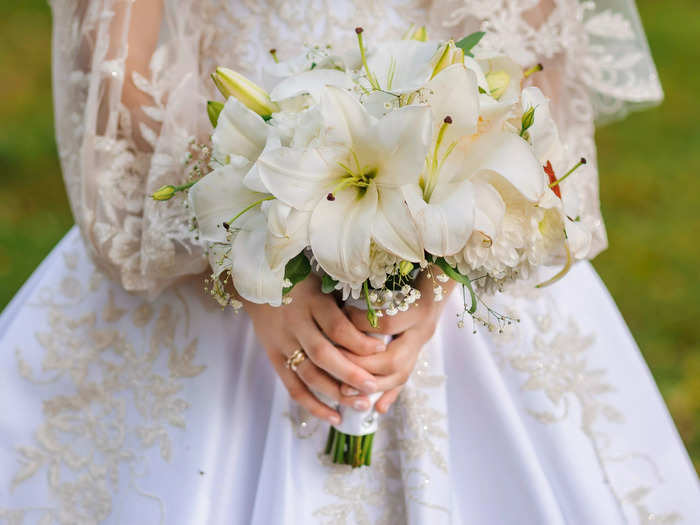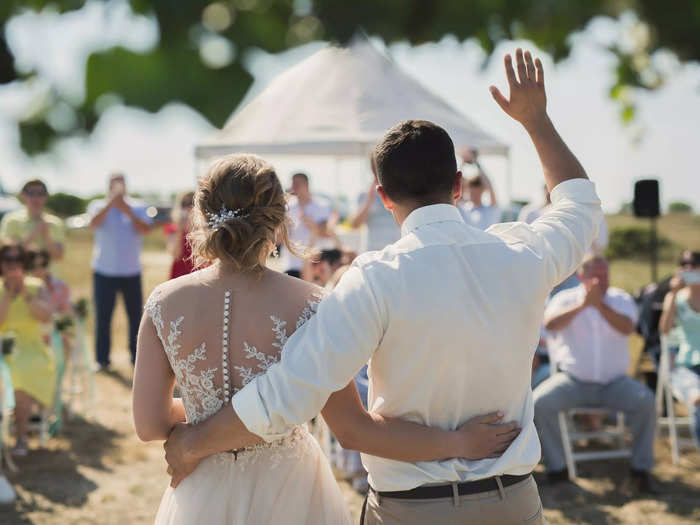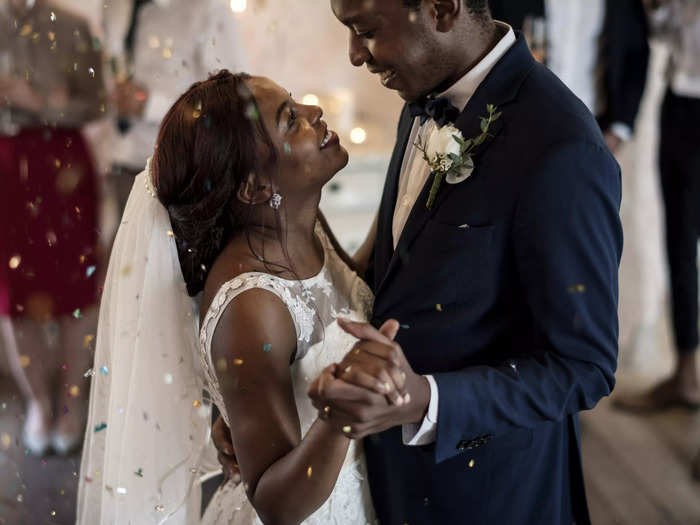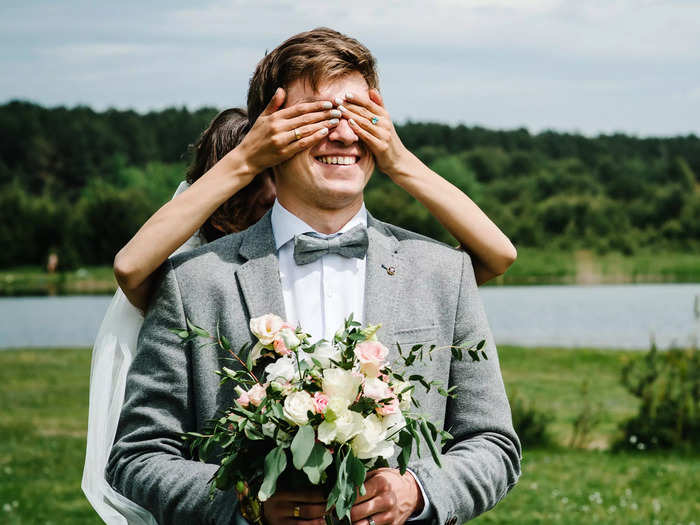Newlyweds are getting rid of old traditions, like wearing matching bridesmaid dresses.Salejandro/Shutterstock
- I've worked in the wedding industry for years and have seen many time-honored traditions disappear.
- Guests aren't congratulating newlyweds after the ceremony in a receiving line.
- Brides are ditching uniform bridesmaid dresses and the bouquet and garter toss.
Couples no longer toss the bouquet and garter.
You might not get to catch a bouquet.
galka3250/Shutterstock
If you have attended a wedding recently, you might have noticed this tradition missing.
A growing number of couples are opting out of tossing their bouquets and garters for a multitude of reasons.
I've noticed the biggest one for skipping the flower toss is not wanting to call out or embarrass single friends. Some couples are also uncomfortable performing the somewhat intimate garter retrieval in front of all their family members.
Traditional bride or groom sides in the ceremony are no longer popular.
The couple can stand wherever they want.
Studio Peace/Shutterstock
Typically in a wedding ceremony, the bride stands on the left side and the groom stands on the right.
According to the Knot, this ritual stems from the days when men carried swords, and they needed their right hand free to protect the bride from capture.
Nowadays, it is less of a tradition and couples will choose whichever side works best for them, taking lighting, pictures, and guest visibility into account.
Guests skip receiving lines immediately after the wedding.
Some couples will tend to everyone on the dance floor.
Rawpixel.com/Shutterstock
A receiving line at a wedding is when guests form a line to address the couple, typically right after the ceremony.
It is essentially the meet-and-greet portion of the wedding. But this tradition has become less and less common over the years.
Instead, couples go around tables during the dinner hour or ask guests to join them on the dance floor.
Uniform bridesmaid dresses are going out of style.
Matching bridesmaid dresses are out.
Alex Gukalov/Shutterstock
Every once in a while, you'll attend a wedding where all the bridesmaids are in the same dress, but it's not as common anymore.
Lately, the biggest trend is bridesmaids wearing different styles of dresses all in the same color. This has gained popularity so people can choose what they're most comfortable in and what will look best on each individual.
For more daring couples, the bridesmaids wear all different styles and colors. Some might stick to a theme, like floral print or neutral colors.
The first-look superstition has been debunked.
Couples tend to ditch the first look.
Sergii Sobolevskyi/Shutterstock
Everyone has heard the myth that it's bad luck to see the bride before the ceremony.
According to Bridal Guide, this tradition originated from the days of arranged marriages when dowries were still prevalent. Families didn't want the groom to see the bride before the wedding in case he change his mind.
Nowadays, more and more couples are opting to see each other before the ceremony to take first-look photos. This allows them to get more shots earlier in the day so they have more time to spend with guests.
It's no longer the norm for a bride's parents to pay for the wedding.
Many couples split the cost of weddings.
George Rudy/Shutterstock






